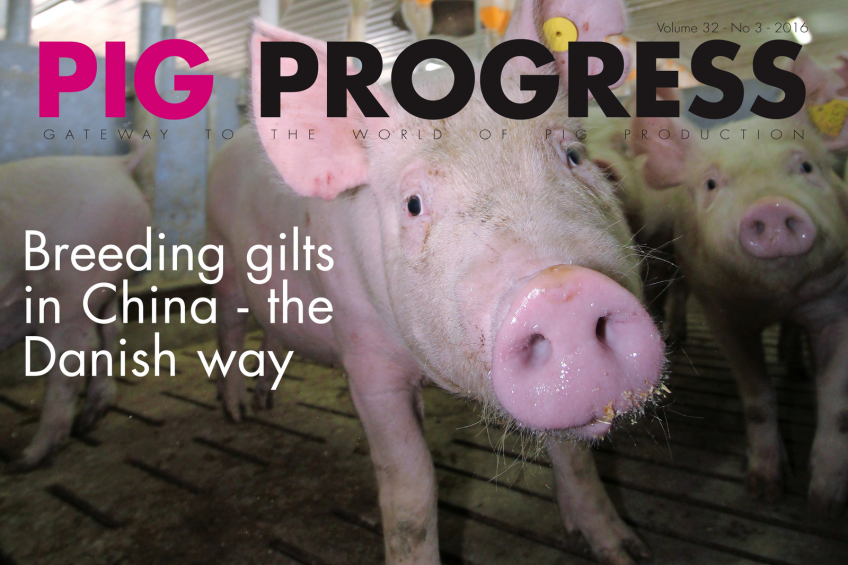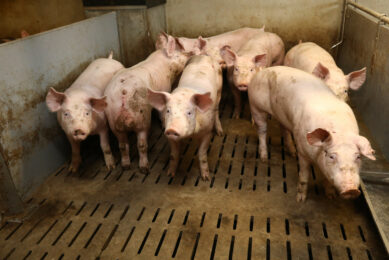New Pig Progress: Where Denmark meets China

The 3rd edition of Pig Progress in 2016 paints a colourful picture of a piece of Denmark on the shores of China. The Danish breeding organisation DanAvl started several pig projects in Jiangsu province.
Pig Progress travelled to the Dan Yu Breeding Farm, in Lianyungang to learn more about the ambitious projects the Danish set up in the east of China. Apart from a breeding facility, the Danish have also embarked on producing own commercial pigs. The Chinese ain’t seen nothing yet… Page 20
Novel way to keep piglets warm
More Denmark in this issue: what to think of a novel way of keeping young piglets warm – not by light but by radiation. The new eHeat concept, marketed by Danish agricultural logistics company Grene-Kramp, is designed to heat a wider space, can be programmed to provide less heat over time and also comes with darkness at night. Page 29
Starfish good food for piglets?
Yet another item from Danish origin: the number of starfish in the country’s waters is troubling local mussel farmers. Why not grab the opportunity and use them in piglet feed? At Aarhus University, they did a trial. Page 28
Making piglets fancy creep feeding
Piglet feeding receives enough attention as this month’s research article dives into the question of how to get more piglets to consume creep feed. Less than even 50% of piglets actually eat creep feed. At Canada’s Prairie Swine Centre, researchers tried to tempt some piglets to take a bite. Page 8
Nuscience, its strong growth and its new CEO
Where piglet feeding also takes a prominent role is at the rapidly growing company Nuscience, headquartered in Drongen, Belgium. The company has experienced very strong growth over the last few years. Late 2015, Johan De Schepper became Nuscience’s new CEO. He informs about his plans for the years to come. Page 14

Searching for alternative protein sources
Zooming out, and looking into nutrition in general, it is interesting to see that globally a search has started on alternatives for South American soybeans. Wilbert Hilkens of ABN Amro summarises a series of possible alternatives. Page 24
Why France’s pig industry is struggling
This month’s country in focus is France. The year 2015 hasn’t been the easiest year for the French pig industry, and sometimes the country appears at a disadvantage to its neighbours. Investments are needed in most sectors, concludes correspondent Philippe Caldier. Page 12

DNA, SNPs, QTLs and more
Columnist John Gadd closes off his quest to define new technical terms and stands still at ‘genomics’. Everything you always wanted to know on DNA, SNPs and QTLs now all combined in one comprehensive article. Page 11
Group housing for sows made tangible
Dr Monique Pairis-Garcia looks back to the first Tri-State Sow Housing Conference. She calls it a successful and educational experience, and tells all about the importance of the event that helped to make the US better prepared for transition to group housing for sows. Page 34
For these any more see our digital magazine section

















